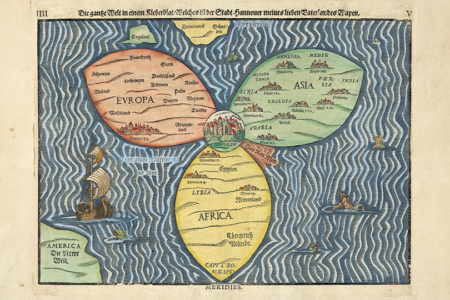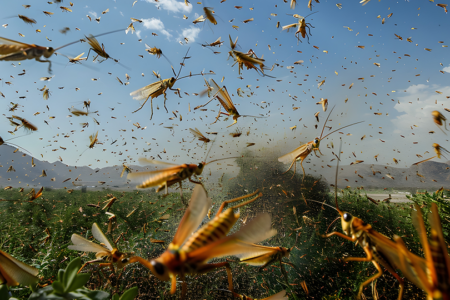The Life, Times And Message Of Isaiah The Prophet Dec/Jan 1970/1971
The Book of Consolation
Introduction To Part II
JEWISH TRADITION CONCERNING THE BOOK OF ISAIAH
From the earliest times Jewish tradition assumed that the book pf Isaiah was written by the prophet Isaiah, the son of Amoz, in accordance with the statement in Isaiah 1:1.
The Babylonian Talmud (Sixth Century A.D.), drawing upon ancient tradition, records:
“Hezekiah and his company wrote Isaiah, Proverbs, the Song of Songs and Ecclesiastes.” Baba Bathra 15a.
Here the term “wrote” is used in the sense of “copying,” as in Proverbs 25:1.
“These also are the proverbs of Solomon, which the men of Hezekiah, king of Judah, copied.”
Likewise ancient rabbinical literature quotes hundreds of references from both parts of Isaiah without making any distinction between them. The apocryphal book of Ecclesiasticus, composed around 180 B.C. by Jesus ben Sirach, strongly alludes to the unity of Isaiah in the following passage.
And Hezekiah did what was pleasing to the Lord and was strong in the ways of David, his father, which Isaiah the great prophet and faithful in the sight ofGod had commanded him. In his days the sun went back (comp. Isaiah 38:8, also II Kings 20:9-11).
With a great spirit he saw the things that are to come to pass at last and comforted the mourners in Zion (see Isaiah 40:1-2). He showed what should come to pass and saw things before they came. Ecclesiasticus 48:25-28. (Compare Isaiah 44:28, 45:1-4)
In the Septuagint version of Isaiah, which was begun in the third century and finished in the second century B.C., the Greek text appears as one book, without any hiatus between Chapters 39 and 40.
Likewise in the two manuscripts of Isaiah (IQ Isa.a and IQ Isa.b), found among the Dead Sea Scrolls, which date back to approximately the end of the second century B.C., there is no break between the first and second part of the book.
It is apparent that already then the book of Isaiah was viewed as one complete entity and must have been considered as such for many centuries before the Qumran Community.
In the Gospel of Luke 4:16 ff, we read that Jesus came to the synagogue in Nazareth where was given the book of Isaiah to read and He found the passage where it is written “The Spirit of the Lord God is upon me.” (Isaiah 61:1) The authorship of. Isaiah was taken for granted by Jesus Himself and by the synagogue congregation.
Repeatedly our Lord and His apostles referred to the whole of Isaiah as one book (Matthew 3:3, 4:14, 12:17, Luke 3:4, 4:16 ff, John 12:38-39, Romans 10:16, 20).
Obviously nobody ever heard or knew in those days about a “Second or Third Isaiah.”
It interesting to note that Ezra the Scribe, (chapter 2) while listing all the people who were carried off by Nebuchadrezzar into captivity (including their horses and mules) mentions only the prophets Haggai and Zecharriah, without ever mentioning an unknown, but outstanding prophet such as the writer of chapters 40-66 undoubtedly was.
After the Babylonian exile, under the influence of the kindred languages of Aramaic and Chaldean, a gradual deterioration of the Hebrew language set in.
Yet in the second part of Isaiah we have the most perfect and beautiful form of the Hebrew language extant. This is also true of the earlier writings of Isaiah.
It was only in the past two centuries that it became fashionable among some Old Testament scholars to question the genuine Isaianic origin of chapters 40-66.
Since we have already dealt with this matter in some detail in our intro-duction to the first volume of this study, we shall now recapitulate briefly the arguments of the critical school against Isaiah’s authorship of the whole book, and see why we consider these arguments as untenable.
Since we have already dealt with this matter in some detail in our introduction to the first volume of this study, we shall now recapitulate briefly the arguments of the critical school against Isaiah’s authorship of the whole book, and see why we consider these arguments as untenable.
The question concerning the authorship of chapters 40-66 of Isaiah was first seriously raised by J. C. Doederlein in 1775. He and a number of other scholars (J. B. Koppe, J. G. Eichhorn) contended that the second part of Isaiah was a collection of prophetic utterances written by an unknown prophet who lived in Babylon toward the end of the exile. This theory was finally developed into its present form by Bernard Duhm (1898), the disciple of J. Wellhausen (1844¬1918), the famous co-author of the so-called Graff-Wellhausen hypothesis about the origins of the Old Testament.
Wellhausen considered the Pentateuch as a conglomerate of several independent sources known as the Jahvistic (J), Ninth Century B.C., the Elohistic source (E) Eighth Century B.C., the book of Deuteronomy which he assigned to the times of king Josiah (640-609 B.C.), and the Priestly Code (Fifth Century B.C.). According to Wellhausen’s speculations, which in time became the dominant theory of textual criticism, all the above mentioned sources were compiled into our Pentateuch, or the Five Books of Moses, around the year 200 B.C. Recent archeological discoveries, especially the Qumran Documents, have made the Graff-Wellhausen theory untenable.
Bernard Duhm, the faithful disciple of his master, applied Wellhausen’s method to the book of Isaiah and by means of a series of highly speculative assumptions and “emendations” of the Massoretic text, reached the conclusion that Isaiah 40-55 was the work of “an unknown prophet” of the exilic period, whom he designated as Deutero-Isaiah or the second Isaiah.
Chapters 56-66 Duhm assigned to yet another “unknown prophet,” or Trito-Isaiah, who, according to Duhm, lived after the exilic period perhaps as late as the Second Century B.C.
In addition, Duhm pronounced certain sections of “First Isaiah’, (Chapters 13, 14, 23, 24-27 etc.) as having originated with “the second or third Isaiahs,” mainly because of their predictive nature, or because, according to Duhm , they did not fit in, in what he assumed to be Isaiah’s theology.
Today the speculative assumptions of Bernard Duhm are almost universally accepted by liberal theologians. Anyone who does not subscribe to their theories is being considered intellectually backward and hardly deserving of being considered “a scholar.”
By the time Duhm and his followers were through with the dissection of the book, little was left upon which the critics could agree that it truly came down to us from the great prophet Isaiah himself. What one scholar considered “genuine,” the other called “spurious.”
What were the arguments of the critical school against the authenticity of Chapters 40-66: These arguments may be divided into three groups.
- Arguments supposedly based on internal evidence.
- Arguments based on the supposed difference in language and style between chapters 1-39 and 40-66.
- Arguments based on the difference of theological ideas.
Let us now briefly consider the validity of these arguments:
1. The Internal Evidence
Much was made by the critical school of the fact that Cyrus of Persia (538-530 B.C.), the liberator of the Jews from their captivity in Babylon in 538 B.C., was twice mentioned by name in Isaiah 44:28 and 45:1. How, the critics ask, could the prophet Isaiah have mentioned by name by a king who was yet to be born some two centuries later? Such a prediction, according to these critics, was unparalleled in the Scriptures.
However, such predictive prophecy is not an isolated case in the Old Testament.
In 1 Kings 13:1-2 an unnamed man of God predicted to Jeroboam that in the distant future a Davidic king will be born and will be called Josiah. He will burn the bones of those who offered incense on pagan altars.
Three centuries later this prophecy was fulfilled (II Kings 23:15-16).
There are numerous other predictions in the Old Testament, which were later fulfilled just as the prophets predicted.
Underlying this and similar arguments of the critics is their rejection of predictive prophecy as “vaticinia post eventu,” that is predictions inserted into the Scriptures, after the predicted event already happened.
Another argument against Isaiah’s authorship of chapters 40-66, advanced by the critics is that the whole orientation of the second part of Isaiah points to a man who supposedly lived in the Babylonian Exile and not in Palestine.
And yet this argument has no real foundation in the second part of Isaiah and is based mainly on speculation or guesswork.
There is nothing in chapters 40-66 which could not have been written in Palestine. Already in the earlier parts of Isaiah there are prophecies which predict the future captivity of Judah and, of course, of Samaria, as if it were already an accomplished fact (Isaiah 1:7-9. 5:13, 14:1-4, 35:1 ff). In Chapters 40-66 Isaiah assumes an ideal and prophetic standpoint and sees the captivity as already completed.
Yet the prophet does not indicate in any detail that he was personally acquainted with Babylon, or with the life of the captives, as for instance Ezekiel did. Babylon is more frequently mentioned in chapters 1-39 (nine times) than it is in chapters 40-66 (four times).
There are positive indications that the author of chapters 40-66 apparently lived in Jerusalem and not in Babylon.
In chapter 40:1 he addresses himself to the people who are in Jerusalem and Zion.
In 52:11 the prophet admonishes his people to leave Babylon, saying
“Depart ye, depart ye, go ye out from there.”
The Hebrew word “mee-sham” – “from there,” suggests that the prophet’s geographical location was a considerable distance from Babylon.
In 62:6, the watchmen on the walls of Jerusalem are mentioned.
It would be hard to understand why the so called Second or Third Isaiah should have so vehemently denounced Canaanite idolatry long after that practice ceased to be a live issue. (Isaiah 40:19, 41:7, 29, 57:5, 63:3 ff, 66:3, 17).
The internal evidence tends to support the view that Isaiah, and not some unknown prophet of the exile was the author of both the first and second parts of Isaiah.
2. Arguments based on the difference in style and language.
It is notoriously difficult to disprove the authenticity of a book based on difference of style or vocabulary.
One must analyze all the works of a writer, without assuming in advance that certain parts of his literary heritage were not his. We know that Isaiah wrote more than what has survived in the book of Isaiah, which apparently is anthology in two parts of his various spoken and written prophecies. The prophet himself or some of his disciples (8:16, 28:9) may have selected such prophetic utterances which were representative of Isaiah’s ministry.
R. K. Harrison in his Introduction To The Old Testament points out:
“In antiquity it was not uncommon for books to be produced in two parts, a practice which H. St. John Thackeray attributes to the need for convenience in handling the scrolls. There is also good evidence for the contention that literary works of high caliber were frequently so planned as to yield to a natural division in the material about the middle of the work.”1
It should be remembered that Isaiah apparently lived a long life. (According to tradition he was killed by wicked king Manasseh, 686-641 B.C. during his reign of terror, 2 Kings 21:6). Accordingly his prophetic ministry covered a period of more than half a century (740-685 B.C.).
It would be reasonable to assume that during such a long time his style and vocabulary would develop and mature, reflecting his spiritual growth, the rich experiences and the new insight which the prophet gained in the course of a long and active life.
It would indeed be strange that a man at the age of seventy or eighty should express himself exactly the same way as when he was thirty or forty years old. And yet a careful analysis of Isaiah shows a striking solidarity or even identity in style and vocabulary throughout the whole book.
Here are a few examples:
The Holy One of Israel: The key designation of God is common to both parts of Isaiah. In chapters 1-39 it appears twelve times. In chapters 40-66 it appears thirteen times. The formula “The Holy One of Israel” is peculiar to Isaiah and appears only twice in Jeremiah (50:29, 51:5), in passages believed to have been influenced by Isaiah.
The LORD will say:
In Hebrew “Yomar Yehovah” – future.
This formula is peculiar to Isaiah and is used in both parts of his book (1:11, 1:18, 33:10, 40:1, 40:25, 41:21, 66:9)
I made it…I fashioned it.
(37:26, 43:7, 46:11), No parallel in other prophetic writings.
A highway
Isaiah 11:16, 19:23, 35:8, 40:3, 62:10
Peace… Righteousness (Shalom, Tsedakah)
In this combination it appears only in Isaiah (32:17, 48:18, 60.17).
These and similar examples of usage peculiar to Isaiah only could be multiplied in the hundreds.2
Duplications and Repetitions
The prophet Isaiah seems to have had a special fondness of repeating certain words or phrases for emphasis. This is fairly common in both parts of the book (21:11, 24:16, 28:10, 13, 29.1, 40, 1, 51:9, 12. 52:6, 57:19).
3. Arguments based on the supposed differences in theological ideas.
The Holiness and majesty of God is common and is strongly emphasized in both parts of Isaiah (1:14, 5:16, 6:3, 10:17. 30:15, 27-31, 35:5, 37:23, 41:14, 43:5, 45:11, 46:9-10 etc.).
The critical school points to the fact that in the earlier portions of Isaiah the Redeemer of Israel appears as the Messianic King (9:6-7, 11:1-5), while in the second part of the book he is repeatedly called the Servant of God (42:1-7,, 49:7, 52:13, 53:1-12).
Although the idea of the Messianic King is predominant in the earlier prophecies of Isaiah, yet the same idea reappears in chapter 55:3-4, while the idea of the Servant of God is not completely absent in the first part of Isaiah (22:10-25).
One of the alleged arguments against the unity of Isaiah is the supposed absence of the idea of a remnant in the second part of Isaiah, so conspicuous in the first part (4:2, 6:13, 10:20-22). Yet the thought of a remnant is also imbedded in 40-66 (56:8, 65:9, 66:19-20).
It is significant that in chapters 40-66 the prophet denounces certain idolatrous practices typical of the pre-exilic Canaanite cults (40:19, 41:7, 29, 65:3), It would be a strange thing for a prophet, who according to the critics lived during the Babylonian exile, or even later, when these particular practices no longer existed and were no longer an issue, to denounce them.3
It would also be most astounding that a prophet of such an exalted stature, who left a legacy of the most lofty prophetic visions and oracles, should have been completely unknown among his own generation, and completely forgotten by posterity.
It is even more unthinkable that the Jews, who guarded with such great zeal their sacred writings, should include in the canon of their Holy Scriptures the writings of “an unknown prophet” (or prophets), as Duhm and his following would have us believe.
In view of all this, we can only conclude that the arguments of the liberal critics remain unconvincing and unproven.4
Jewish tradition, including Jesus Himself, His apostles, and the early Church attributed the whole book to Isaiah the son of Amoz.
ENDNOTE
- R.K. Harrison – op. cit. p. 787.
- For a detailed analysis of the vocabulary and style of Isaiah, see The Indivisible Isaiah, by Rachel Margalioth, Yeshivah University, N. Y. 1964.
- Rachel Margalioth, Op. Cit., page 187.
- Dr. Yehuda Radday of the Technion Institute in Haifa, Israel recently obtained his Ph.D. at the University of Jerusalem for a thesis on Isaiah in which computers were “proving” that “First Isaiah” and “Second Isaiah” was written by two different persons. However, computers can only work on the data fed into them. In this case the programmer not only assumed that there were two “Isaiahs,” but that one of them wrote chapters 1-39 and the other (or others), the remainder of the book. This is known in logic as “begging the question,” that is assuming that which you are trying to prove and then being gratified when the proof “confirms” your basic assumption. Had the programmer assumed the essential unity of Isaiah, although written in two parts, the the results would have been completely different. The computerized technique is not a serious contribution to the study of the book of Isaiah.







